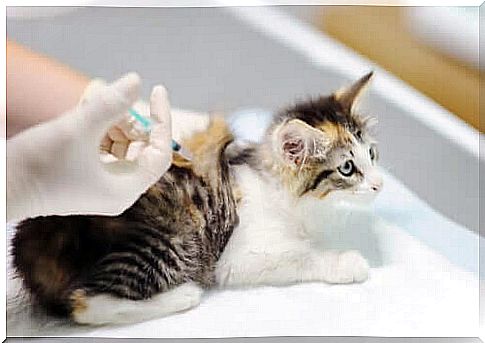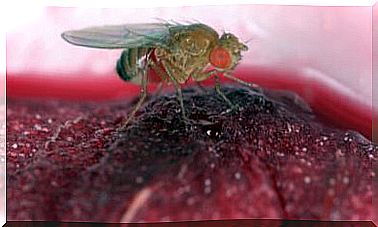Treatments For Giardiasis In Cats

It is a very common parasitic disease in domestic cats and even other pets. In this article, we’ll tell you everything you need to know about giardiasis in cats and what treatments are available for the disease.
What is giardiasis in cats?
First, we need to talk about Giardia lamblia , the protozoan-like parasite that causes the disease known as giardiasis. It is an organism that can only be observed through a microscope and that is housed in the intestine, adhering to its walls.
This organ is the main damage during the course of the disease, which first affects the small intestine and then the large intestine. In turn, it causes digestive problems and deteriorates the animal’s general health.
For some cats, giardiasis is asymptomatic, and we will only notice the disease through a routine veterinary examination. In other cases, symptoms are: diarrhea, poor appetite, nausea, vomiting, dehydration, abdominal pain or abdominal bloating, weight loss and intestinal disturbances.

How is giardiasis in cats transmitted?
The contagion is more common when there are many cats together – an animal shelter or a house with more than five of them, for example – and, although a priori it is not fatal, the lack of adequate and timely treatment can end the feline’s life . The Giardia parasite is highly contagious and is also transmitted to humans.
If your pet has access to the outside, it will be easier to be infected. The Giardia prefers moist environments and that have not been cleaned or sanitized, and common microorganism that inhabits the stool. Therefore, you should prevent your cat from sniffing or getting close to the droppings of other animals.
The parasite also lives in stagnant or contaminated water. Make sure your pet doesn’t drink water from puddles. Other forms of contagion occur through licking between cats or from a female to her kittens during pregnancy.
Diagnosis and treatment of giardiasis in cats
Identifying the disease can be a little difficult because, as mentioned earlier, the parasites are not detected with the naked eye. In some very severe or advanced cases, they can be found in the animal’s feces.
The veterinarian may examine the sample and find nothing, so it is essential to take it to the laboratory so that it can be analyzed under a microscope. If no traces of the parasite are found, it is often recommended to repeat the test until this is confirmed or completely ruled out.

Once the disease is diagnosed, it is very important to act immediately to completely eliminate the parasites lodged in the intestines. The most common treatment is to take these two medications: metronidazole and fenbendazole, both together and separately.
They should be administered for a period of 7 to 12 days without missing any dose, as a day of forgetfulness can lead to a strengthening of the giardia colony.
At the same time, don’t forget to give your cat plenty of fresh water to avoid dehydration. Remember that as part of the treatment your pet will have diarrhea for a few days. This is the only way to eliminate harmful organisms.
Don’t forget to clean the area where your pet has defecated: remove debris from the litter box twice a day. This way, you will avoid a new infection or other animals – and also yourself – from becoming infected.
Finally, remember that prevention is the best weapon you have to keep your pets from getting sick. In addition to giving giardiasis vaccine to cats, also keep your pet’s belongings clean and do not allow them to come into contact with stray cats.








